- Mamtalaya
- Khushalaya
- Solar Smartaalaya
- MHM Chachi
- STEM Guru
- Model Kasturba
- Vardaan
- Malnutrition Treatment Centres
- Model Library
- Model Labour Delivery and Recovery Room
- Model Science Lab
- Model CHC
- Model PHC
- Paridhan
- Braille Library
MAMTALAYA: THE MODEL ANGANWADI CENTRES
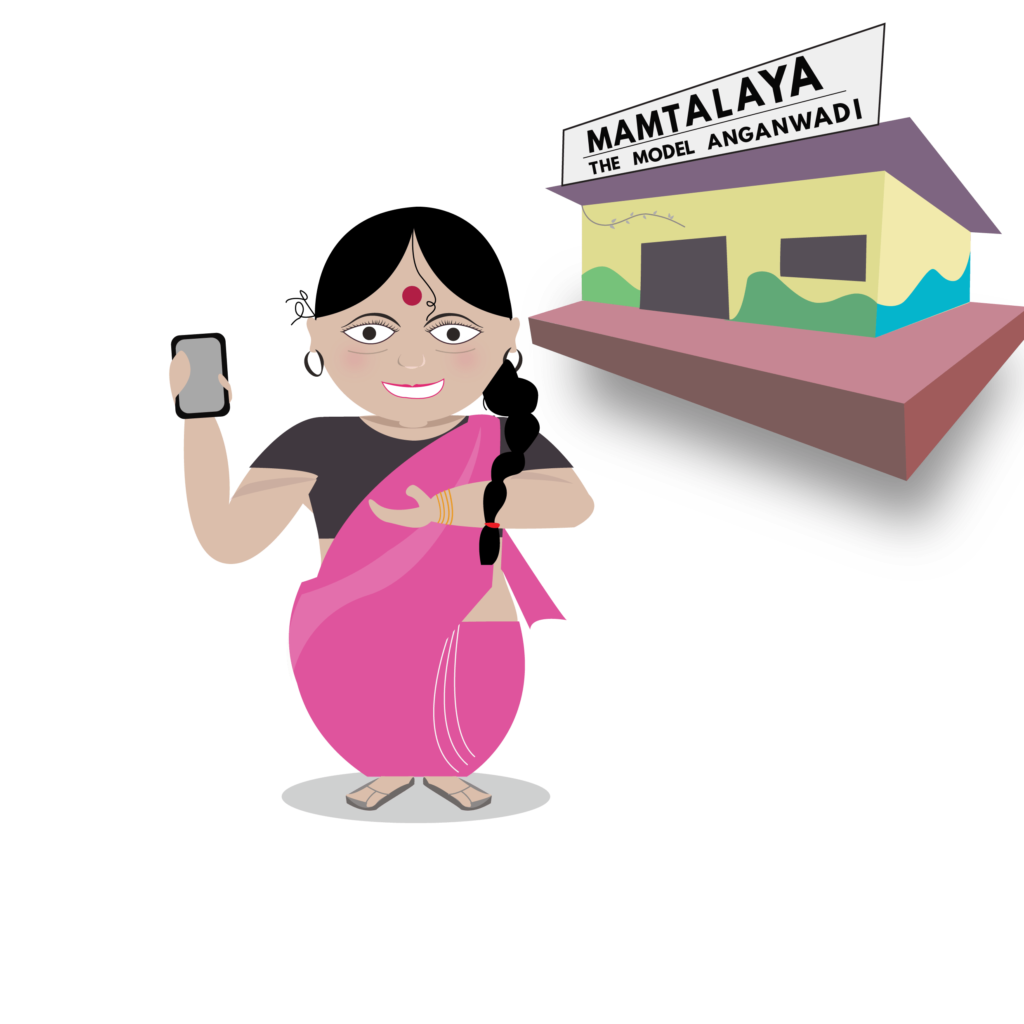
India has one of the world’s maximum number of children suffering from malnutrition. Biologically, women are more likely to be malnourished, especially when they undergo menstruation, pregnancy, or lactation. Lack of consumption of iron and proper nutrients by the mother during pregnancy leads to anaemia that increases the risk of her death during and after birth. The children of malnourished women are more likely to have poorer mental and physical development, higher rates of disease and infection, and are more likely to die in childhood.
Due to deficiency of food and improper health facilities, the maternal mortality rates are rising at an alarming rate. However, malnutrition is not just dependent on calorie intake or low nutrient diets but also on insufficient sanitization that causes infection-borne deficiencies and impairs growth. It has resulted in a stunting impact in majority of new-born children due to which they suffer from mental and physical developmental delay with absence of proper nutrition and immunity. Moreover, the absence of pre-schooling is responsible for school dropouts especially in the rural areas that has led to an increase in the burden of malnutrition and poverty.
Anganwadi is a rural set up for the child health care centre in the Indian villages started by the Indian government in 1975 as part of the Integrated Child Development Services program. Hence, upgradation of existing Anganwadi centres is a very good way to combat hunger and malnutrition.
These setups-
- Work for the health of both women and children.
- Aim at working for the holistic development of the child especially in the ages of 0-6 years, including preschool education, child rights, gender equality and broadly for community participation and community development.
- Reduce mortality, morbidity, malnutrition and school dropouts.
- Help pregnant and lactating mothers and children with nutritional food and proper health check-ups.
KHUSHALAYA – THE HAPPINESS CENTRE
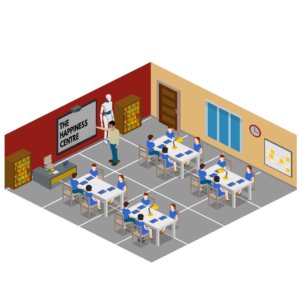
This project aims to ameliorate the standard of education in our country. Proper education stands out as a pillar for a concrete society. Therefore, every citizen holds the right to seek quality education. With the speeding technological world, there are many such schools in India who do not have access to quality education and the reasons for that are several.
In a unit of ‘Khushaalaya’, we provide- Smart Cass (1 Unit), Computer Set (3 Unit), Library (1 Unit – 200 books with one shelf), MHM Library (1 Unit), Solar Power Backup- Inverter, battery, solar PV etc., BALA (Building as Learning Assistance) of the classroom, basic amenities i.e. whiteboard, table, chairs, mike system with the speaker will be provided.
With Khushaalaya, Motive8 helps in uplifting the infrastructure through building the boundaries and initiation of modern school classrooms. We provide all the basic facilities to overcome all possible drawbacks that have been standing as major hurdles towards proper education such as-
- Installation of drinking water coolers, as it is a primary need, because students get to spend almost seven to eight hours a day in the school.
- An MHM Chaachi box will be placed in the library where the students can seek some light regarding menstrual hygiene management.
- Books related to subjects other than their syllabus will be provided in the libraries. Reading of non-syllabus books will help them in improving overall perspective.
- Provision of access to digital education, thereby giving the students a platform to uplift their medium of learning.
- A solar power backup to ensure availability of electricity.
SOLAR SMARTAALAYA
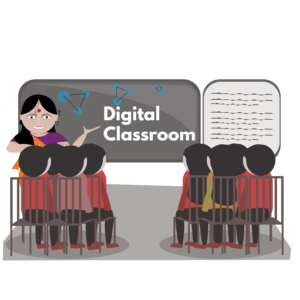
With the change in time, major changes in the development have been taking place in the fields of education and technology. Technology has been brought up to revolutionize the traditional classroom teaching process in India. But unfortunately, these advancements have just limited themselves to urban textured spaces. The rural greens of the country still don’t have access to the touch of digital learning in today’s time. This results in some issues which the educational institutions in these places go through such as low attendance and low PTR (pupil-teacher ratio).
Thus, to bridge this gap and make learning more interactive and a bit different from the traditional method, digital learning should also reach the classrooms of rural areas. Team Motive8 has come forward with the concept of Solar Smartaalaya to upgrade the existing classrooms of the school to Smart Classroom where children get an environment of interactive learning with the help of audio-visual learning resources.
Considering different sizes of classrooms, there are three versions of the product i.e. Super, Maxim and Mini. Furthermore, to combat the problem of unavailability of electricity in most of the rural schools, we have also integrated our product with the solar power back-up facility.
It also has a minimal power requirement and doesn’t need continuous availability of the internet to be operated. The operator just has to fetch content from the cloud once in a month and hence internet requirement is the bare minimum.
MHM CHAACHI (AUNT) LIBRARY
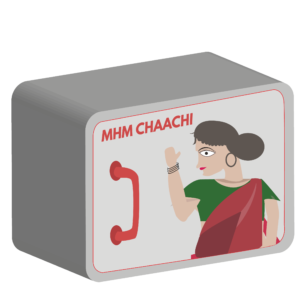
Menstruation is a phenomenon that is very less talked about and menstrual hygiene is something that people talk about even less. We believe in creating an environment that values and supports women’s ability to manage their menstruation with dignity. Menstrual hygiene should be more than just access to sanitary pads and proper toilets. Therefore, Motive8 Services introduce MHM (Menstrual Hygiene Management) Chaachi at schools.
MHM Chachi in school libraries provide IEC (Information, Education & Communication) cum guide toolbox that contains multiple MHM learning resources like comics, booklets, articles etc. and some sample pieces of menstrual absorbents i.e.menstrual cup, reusable sanitary tampons, pads along with a guidebook.
Through MHM Chachi, we achieve the following goals -
- Not only girls receive proper awareness, but they also learn the right ways to manage menstrual hygiene.
- This setting encourages everyone to fearlessly speak about menstruation, manage menstrual hygiene and understand the utter normalcy of the process.
- It reduces school dropouts and promotes hygienic practices.
- Additionally, it also shortens the urban-rural division which in turn helps in overcoming the social stigma.
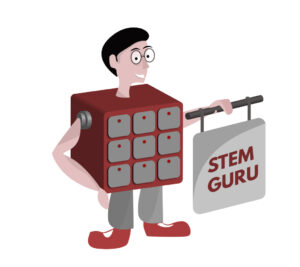 STEM GURU- A MINI SCIENCE LAB
STEM GURU- A MINI SCIENCE LAB
In today’s technological era, the growth has been very rapid and complex. This transition has been massively inspiring the education pattern. For any student to be a part of this competitive system one has to enter into this methodical structure of education. STEM education is newly evolving in our nation that has been focusing on Science, Technology, Engineering and Mathematics. This is a special curriculum that has been designed to contribute innovators, critical thinkers and problem solvers to society.
In the upcoming decade every field work will be inculcating few aspects from STEM. There is an urgent need of enhancing and implementing this curriculum in every school of our nation. In India, about 113 million students depend on the government schools, therefore it should be mandatory for all the government schools to be STEM based. Apart from that even all the private schools must include this system in their curriculum. As India is one of the countries that produces the highest number of engineers and scientists, having a STEM based curriculum would enhance the quality of our students undoubtedly.
Being enthusiastic about delivering certain changes in the space of education, team Motive8 has come up with a STEM Guru. It is a specially designed toolkit for the schools that will be carrying important amenities like screw gauge micrometer, ammeter, thermometer, stopwatch and many more.
These amenities will compensate for the need of a science laboratory.
For all the schools without a structured science laboratory, STEM Guru is a wise solution for them to deliver practical learning. Installation of STEM Guru would help in -
- Answering many curiosity-based questions raised by the students.
- Building an effective education method in schools.
- Making it easier for the students to get more skilled.
- Optimizing the level of practical learning in India.
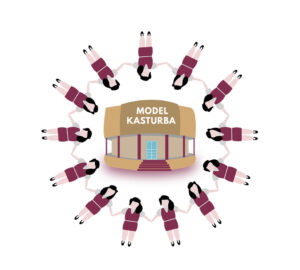 MODEL KASTURBA - A TRANSFORMED KGBV SCHOOL
MODEL KASTURBA - A TRANSFORMED KGBV SCHOOL
Gender disparities persist even today in rural areas and among disadvantaged communities. The enrolment trends indicate that there remain significant gaps in the enrolment of girls at the elementary level as compared to boys, especially at the upper primary levels.
The Government of India launched a scheme called Kasturba Gandhi Balika Vidyalaya (KGBV) in August 2004 to provide educational facilities for the dropouts and girl children between the age group 10-14 years belonging to minority communities and families below the poverty line in educationally backward blocks. KGBV ensures access and quality education to the girls of disadvantaged groups of society by setting up residential schools at upper primary level.
Educationally Backward Blocks (EBB) are geographic areas between a village and a district where the female literacy rate is below the national average (46.13%) and the gender gap in literacy rate is above the national average (21.59%). Residential schools such as Kasturba Gandhi Balika Vidyalaya or KGBVs are instituted in these blocks to improve education for underrepresented girls but often face obstacles in the process of their goal.
Through ‘Model Kasturba’, we transform existing Kasturba Gandhi Balika Vidyalaya (KGBV) school into Model KGBVs through our 360 degrees approach which covers multiple steps like -
- Improvement in the infrastructure.
- Enhancing the teaching methodology.
- Capacity building of the teachers and staff.
- Monitoring and advocacy.
- Focus on women empowerment and other issues.
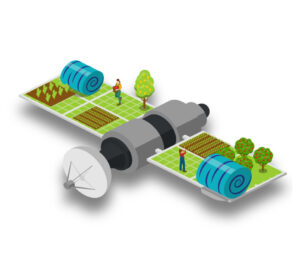 VARDAAN
VARDAAN
(AI BASED IRRIGATION SYSTEM- MONITORING FARM THROUGH SATELLITE)
India is the world’s seventh largest country and one of the most densely populated areas in the world. The amount of water needed in India is immense, making India the centre of the water crisis. Agriculture, with its allied sectors, is the largest source of livelihoods while 70% of its rural households still depend primarily on agriculture for their livelihoods and about 89% of groundwater extracted in India is used for irrigation purposes.
Irrigation related problems can be reduced significantly by providing the data driven decisions to Indian farmers. The project ‘Vardaan’ provides ‘AI Based Irrigation Monitoring’ solution to overcome numerous difficulties faced by an Indian farmer. It is the world’s first Artificial Intelligence (AI) that can predict exactly how much water and nutrients farmers need to give to their crops at any location around the world at any time. It uses satellites, weather, topography, and a variety of other real-time factors along with geospatial deep learning to determine exact irrigation and fertigation needs.
Most of the farmers lack access to information and education that can aid them in taking right agricultural decisions. With limited information they end up exploiting their farmlands by over irrigation and excessive fertilizer consumption, in turn this increases overall agriculture cost and puts an economically stressed farmer under further stress. Every year thousands of farmers commit suicide because of these situations.
The idea is to install AI based irrigation system which provides farmers with crucial data points such as -
- Volumetric Soil Moisture Levels (even in the root zone: 3-6ft).
- Weather at the farm level.
- Crop Specific Irrigation Recommendations.
- Available Nitrogen and Phosphorus (Correlates nitrogen and phosphorus being and what is available in the soil).
- Ability to monitor the health of the land and the plants (on the land) remotely.
- No hardware is used for this and we can service even to the most remote farmers at a very low cost.
- This information would enable farmers to take judicious decisions and reduce cost and improve yields.
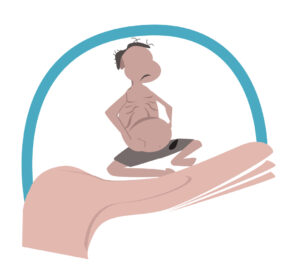 MALNUTRITION TREATMENT CENTRE
MALNUTRITION TREATMENT CENTRE
India is one among those major countries that is suffering from undernourishment and deficiency of minerals and vitamins that results in a high rate of child mortality. Malnutrition Treatment Centre (MTC) is a place where we involve and aim to eradicate the prominent issue of malnutrition that has been prevailing in our country since ages.
In this centre, we identify those districts that are severely suffering from acute malnutrition and provide them immediate treatment for their recovery. They are admitted to these centres on the basis of some defined criteria and are treated until their complete recovery. Not only that, they are also monitored at regular intervals in order to keep a check on their health and gradual growth.
This type of training-based care responds to the urgent need to reduce paediatric deaths due to malnutrition. Moreover, the trained frontline health investigators such as the Accredited Social Health Workers (ASHA) and Anganwadi workers (AWWs) engage in the collection of data on diet, morbidity, anthropometry and utilization of health and nutrition services.
- At the community level, the early identification and referrals of the severe acute malnutrition children is done and after care support is also offered to the mothers once their children are discharged from the MTC.
- The affected children are admitted in these centres and are provided with medical assistance and nutritional therapeutic care. There are follow-ups at the district level and the block level by MTC to ensure the development and growth of the children.
- A kit is given during their discharge to the mothers that includes information about proper breastfeeding techniques.
- There is also provision of counselling for the children’s hygiene and type of food intake on a regular basis to help them improve and grow.
 MODEL LIBRARY
MODEL LIBRARY
In a competitive world, it is very much essential for a student to be confident and well resourced. A child’s overall education must be ensured in the growing stage. A growing child needs to have access to knowing various fields, learning about those fields, developing an extracurricular and many more. The best place for any individual to seek vibrant knowledge is school. Thus, it is necessary for a school to have all these facilities.
The Model Library opens up a window for a proper library. In a technically advancing world, it is important for a child to enhance their cognitive skills, confidence, have a practical sense of understanding and a wide spectrum of knowledge.
The Model Library has been designed to enhance the learning process of the students. In order to develop these skills in growing children -
- This library provides a set of books from various fields, shelves, tables and chairs. This package gives a complete library set up.
- It has been created to advance the level of knowledge and provide the students a varied range of learning sources.
- This also helps the students build a regular reading habit and helps them seek extra knowledge that boosts their confidence.
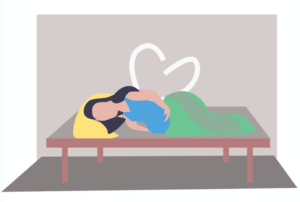 MODEL LABOUR DELIVERY ROOM
MODEL LABOUR DELIVERY ROOM
Each year, millions of patients are affected by Healthcare-Associated Infections (HAI) worldwide. The Government of India has laid significant emphasis on improving the quality of care during the intro and immediate postpartum period as the risk of maternal and newborn mortality is disproportionately high around the period of childbirth.
It was recognized that the majority causes of maternal and newborn mortality are preventable through appropriate care of mothers during and after labour and appropriate care of newborns after birth. With a standardised plan for a Model Labour Room we shall reduce the maternal mortality numbers and provide a comfortable experience to the women and their families.
This project targets four factors crucial to the experience of an Institutional delivery;
- Transportation: This part of a model offers a helpline-based transportation system which has a digital record of all expectant births and is available on ground to ease the transfer for the women who opt for home births as the services for reaching the closest hospital are not easily available. This is built as a modified two or four-wheeler and kept at the local level in the village itself.
- Hygiene: This is managed with Environment graphics, equipment and guidelines provided by us for the room and staff members. We also provide adequate training to the members on safety as awareness is the first key to a safe birth.
- Room Layout: We provide a standardised plan to promote social distancing in the labour room and keep space for the privacy of the mother. The layout also allots space for storage, a clean unit, chair for Kangaroo Care etc.
- Comfort: This attribute is built with sensitivity training and guidelines for all staff members along with a short training video for the birth companion. With this holistic four-point plan we aim to give a positive birthing experience to the mother and keep the mother-child safe.
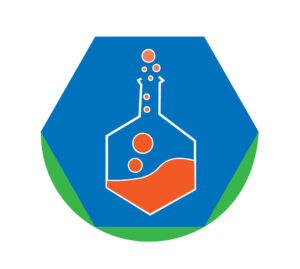 Model PHC
Model PHC
In today’s technological era, the growth has been very rapid and complex. This transition has been massively inspiring the education pattern. For any student to be a part of this competitive system one has to enter into this methodical structure of education. Advanced education is newly evolving in our nation that has been focusing on Science, Technology, Engineering and Mathematics. This is a special curriculum that has been designed to contribute innovators, critical thinkers and problem solvers to society.
Model Science Lab is a specially designed kit for the schools that carry few important amenities that act as a model science laboratory. Installation of Model Science Lab helps in answering many curiosity- based questions raised by the students.
There is an urgent need to implement this curriculum in every school of our nation. In India, millions of students depend on government schools, therefore it should be mandatory for all the government schools to have such basic amenities. Apart from that, even all the private schools must include this system and infrastructure in their curriculum. As India is one of the countries that produces the highest number of engineers and scientists, having a hands-on experience-based curriculum would -
- Enhance the quality of the students undoubtedly.
- Help in optimizing the level of practical learning in India.
- For all the schools without a structured science laboratory, Model Science Lab is a wise solution for them to deliver practical learning.
- Build an effective education method in schools and make it easier for the students to get more skilled.
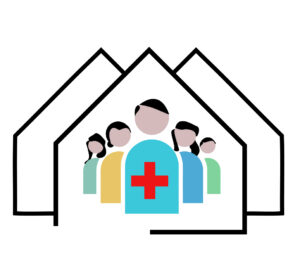 MODEL CHC
MODEL CHC
In communities, health is a product of many factors, and many segments of the community can contribute to and share responsibility for its protection and improvement. The Community Health Centres constitutes the secondary level of health care that is designed to provide referral as well as specialist health care to the rural population. Also, in countries with universal healthcare, most people use these healthcare centres.
The availability of proper care during and immediately after delivery are critical in saving the lives of mothers and newborns. Therefore, labour rooms play an important role in reducing maternal and neonatal mortality in the primary care setting. The Community Health Centres are a network of clinics staffed by a group of general practitioners and nurses providing healthcare services to people in a certain area.
- The Community Health Centres (CHC) act primarily as a referral centre (for the neighbouring PHCs, usually 4 in number) for the patients requiring specialised health care services.
- They accordingly designed to be equipped with : four specialists in the areas of medicine, surgery, paediatrics and gynaecology; 30 beds for indoor patients; operation theatre, labour room, X-ray machine, pathological laboratory, standby generator , etc., along with the complementary medical and para medical staff.
- They cover typical services like family practice and dental care, but some clinics have expanded and include internal medicine, pediatric, women’s care, family planning, pharmacy, optometry, laboratory testing, and more.
 MODEL PHC
MODEL PHC
The objective of this project is to ensure that people who are not getting proper medical facilities, get all the benefits comfortably and economically, that they are deprived of.
The Primary Health Centre (PHC), is a very important aspect of the third tier of the framework of rural health institutions in India. With raging unavailability and absence of proper health care and required equipment, the sustenance of good medical facilities has become a big challenge for the people depending on PHCs (especially pregnant women and infants). Hence, to act as the primary medical centre for the patients requiring specialised health care services, the PHCs have been accordingly designed to be equipped with: upgrade in the areas of medicine, well maintained OT (mainly for child delivery) , paediatrics and gynaecology; 30 beds for indoor patients; operation theatre, labour room, X-ray machine, inspection bed, haemoglobin metre, pathological laboratory(for general testing) , standby generator, solar plating, etc., along with the complementary medical and para medical staff.
The aim of Model PHC is to -
- Upgrade the equipment used in the health centres to energy efficient methods.
- Reduce maternal and neonatal mortality in the primary care setting by upgrading labour rooms.
- Improve the health of expecting mothers as well as newborns suffering due to lack of proper medical services by the availability of the energy efficient labour rooms.
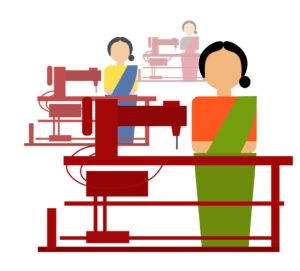 Paridhan
Paridhan
Project Paridhan addresses the problem of unemployment by giving hands-on skilling training to women so that they could earn a decent income by delivering the local demand of the apparel industry.
Apparel Industry is directly linked with the fashion industry which has continuous potential of demand in the market as well as upgrading itself. Moreover, the government has its own demand for apparel products in the form of dresses in public institutions like schools, hospitals, police stations etc. To cater such demands the government has to install high technology edge sewing machines in medium scale to run the industry.
The idea of this project is to install an Industrial Sewing Machine Unit with the capacity of 250 women employability in an apparel industry can be State of Art Infrastructure. It can be easily operated by Women Federation Group after a successful training program.
- Project Paridhan has a capacity to produce 4000 dresses in a day when it runs with full strength.
- It can also be used to produce government school’s dress, masks, gloves (COVID -19), hospital’s staff dresses and local market demand cloths.
- Gradually, it can be skilled up to fulfill the gap of professional dresses of the garment industry.
 BRAILLE LIBRARIES
BRAILLE LIBRARIES
In this competitive world it is extremely essential for everyone to be confident and well-resourced regardless of their conditions. Education is a right that every individual irrespective of the challenges must have an access to. The visually impaired citizens make up for about more than 15 million in the total population. Therefore, educating this mass and keeping them future ready is a must.
Without braille literacy, the near-blind are often unable to understand or use written communication. As a result, they become dependent on interpreters to read and write for them, which limits their employability and significantly decreases their quality of life.
To tackle this problem, the Braille Library has been exclusively designed to improve the learning process of visually impaired students irrespective of their conditions or situations. This package gives a complete library set up not only by providing books and otherreading materials but also by focussing on the overall cognitive upliftment of the student in general. Keeping these benefits in mind, Team Motive8 has come up with the idea of installing Braille Libraries in both urban and rural locations with an aim to-
- Enhance the cognitive approach of the visually challenged students. • Provide them a source of entertainment.
- Give them access to limitless knowledge.
- Develop their extracurricular skills.
- Promote inclusive education.
- Generate awareness regarding gender and basic citizen rights.
- Holistic approach.
- Build confidence.
- Create interest towards education
- Provide an uninterrupted supply chain of knowledge at all times.
Motive8 strongly believes that the Braille Libraries can be implemented in both Government and Private schools and colleges, irrespective of their geographical location. Apart from that, it can also be set up independently in any urban or rural locations.
A. Men 4 Menstruation Campaign:‘Men 4 Menstruation Campaign’ is an initiative of ‘Motive8 Trust’ under which a group of men, inspired and supported by women, has come forward to fight against ‘Period Poverty’. We are driving this campaign to ensure availability of Menstrual Hygiene Management’ (MHM) awareness and facilities to all the menstruators, irrespective of their socio-economic and geographic positions.
We are driving this campaign to ensure availability of Menstrual Hygiene Management’ (MHM) awareness and facilities to all the menstruators, irrespective of their socio-economic and geographic positions.
Through this campaign, we are aiming to bring in a revolution, post to which ‘menstruation’ will no more be a taboo subject, and menstruator will have enough access to informed and sustainable choices to manage their menstrual health. The name in itself describes that engagement of men in creating awareness about the issue is the distinctive fact of our campaign. We believe that it’s not only difficult but impossible to overcome societal silence over the issue, until and unless men get sensitized.
The campaign is an amalgamation of several activities such as:
- Digital Campaign a digital drive to add weight to our mission and vision and create synergy digitally. We will get people mobilized with our idea and make them join our campaign digitally, to spread our message in mass.
- Signature Campaign A campaign engaging government departments and institutions (private and public) making all their members taking ‘Menstruation Pledge’ and signing for ‘Men 4 Menstruation Campaign’, followed by ‘High-Tea’ discussion about ‘Menstrual Hygiene Management’ awareness as well as facilities.
- Workshop An awareness workshop on ‘Menstrual Hygiene Management’ covers multiple aspects such as nutrition, tracking menstruation cycle, myth-busting, awareness about MHM products, physiology of menstruation, hygiene, and taking care during the period. The session ends with ‘Question-Answer’ round. ds with ‘Question
- MHM Chaachi: ‘MHM Chaahchi (Aunt)’ is a Menstrual Hygiene Management guide cum toolbox that contains IEC materials, comics with information related to menstruation. It also comes up with samples of MHM products like biodegradable reusable sanitary napkins, menstrual cups, tampons along with a guidebook for using them properly. The toolbox, usually designed for schools, also works as a ‘Pad-Bank’. We are on a mission to get as many schools equipped with our ‘MHM Chaachi’ box.
- Distribution Drive: Under the campaign, we are running a drive to distribute sustainable menstrual hygiene products i.e. reusable sanitary napkin and menstrual cups among underprivileged
- Period Friendly Toilet: Lack of MHM awareness and facilities is still the biggest reason behind girl students dropping out from schools, on hitting puberty. Access to the toilet is a crucial element when we talk about the availability of MHM facilities. We are hence upgrading the existing toilet into a ‘Period Friendly Toilet’ by adding required accessories and amenities to the existing toilets.
Check www.men4menstruation.org for more details
B. Operation Whiteboard:The project idea has been conceptualized so as to assure‘Freedom from Chalk Dust’ to the students and teachers in the schools. The idea is to replace existing blackboards with whiteboards in the classrooms.

Rationale
- Chalk Dust: The dust coming out from the usage of chalk on blackboards is hazardous to the eyes and skin of the teachers and students. Chalkdust also leads to a problem of breathlessness in students and teachers. Installation of whiteboard will drive this problem away.
- Dull Visibility & Student’s Focus: After a certain period of usage, blackboards get dull and it becomes too difficult for attracting student’s focus on the blackboard for the desired duration.
- Comfort during teaching: whiteboards provide an option of using multi-colour markers, which makes it easier for teachers to explain during lecturing.
- Livelihood: ink to be used in markers is planned to be produced by involving local SHGs. This will open the gateway of livelihood opportunities for the local SHG members.
Expected Outcomes
- Freedom from Chalk Dust: whiteboards save children and teachers from chalk dust which is too harmful to the respiratory system and eyes.
- Better Visibility: the students can visualize writing over whiteboard any day better than that on blackboards.
- Check on soil degradation: this will protect soil from harmful chalk dust, which on getting disposed to the soil affects its fertility.
- Can be used as a Screen: unlike blackboards, whiteboards can also be used as a screen for projecting any videos and presentations through projectors.
C. Mamtalaya- The Model Anganwadi Centres
This project aims to upgrade existing Aanganwadi Centres(AWCs) i.e. Nutrition delivery Centre into Model AWCs by ensuring the availability of basic amenities and facilities in the centre.
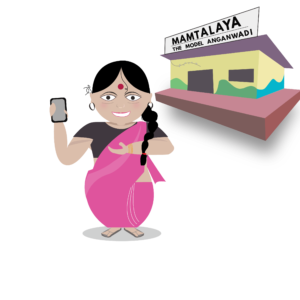

Project Component’s
- Learning with BALA: With ‘Building as a Learning Assistance’ concept, the walls, and ceiling of the classroom does not only look attractive but also become informative with lot of the knowledge charts/paintings running over the walls.
- Improved Attendance: Availability of furniture i.e. table and chair, solar-powered lights & fan, whiteboard, and toys don’t only make kid’s presence in the centre comfortable but also
- Better Hygiene: availability of Handwash Units, drinking water access with pump, adequate utensils ensure better hygiene for kids
Minor Repair: repair of damaged plasters and minor construction makes centre safe and hazard free for kids, and also appears more friendly to kids.
Projected Outcomes
- Rise in children’s attendance in Anganwadi Centres
- Reduction in malnutrition cases due to rise in children’s attendance
- Improvement in the nutrition status of children
- Better cognitive development of children
D. KHUSHALAYA – THE HAPPINESS CENTRE
Under ‘Khushaalaya’ we aim to upgrade existing school to model school by ensuring the availability of several facilities such as libraries, computer, technology-equipped digital learning solution (with class wise audiovisual learning resources), MHM Library, solar power back-up facilities, decoration, and beautification etc.

Project Component
In a unit of ‘Khushaalaya’, Smart Cass (1 Unit), Computer Set (1 Unit), Library (1 Unit – 200 books with one shelve), MHM Library (1 Unit), Solar Power Backup- Inverter, battery, solar PV, etc., BALA of the classroom, basic amenities i.e. whiteboard, table, chairs, mike system with the speaker will be provided
- Digital Learning Resources: a digital learning solution with a library of audio-visual learning resources make it easy for the teacher to teach using such resources. Such resources have also been proven as the most useful teaching resources by researchers by educationists.
- Learning with BALA: With ‘Building as a Learning Assistance’ concept, the walls, and ceiling of the classroom does not only look attractive but also become informative with a lot of the knowledge charts/paintings running over the walls.
- Reading Habits: a library setup with around 200 books is very useful to inculcate the habit of book reading among students and also gives them a chance to learn beyond their general curriculum books.
- Solar Power Backup: Generally rural schools either stay disconnected with the electricity or face an acute shortage of electricity during school hours. The availability of a solar power backup system removes the dependency of the classroom on electricity from the grid and keeps it always ready for the students.
- Computer Literacy: availability of computers and a virtual classroom setup enables the student to learn operating computers.
- Basic Amenities:a whiteboard, table, chair (2), mike system with the speaker are also provided so as to make learning interesting, comfortable and interactive process keeping entertainment as a part of the teaching process.
Projected Outcomes
- Improved learning outcome of students in government schools
- Improved student’s attendance percentage in governments schools
- Introduction of the practice of data-driven teaching methodology in government schools
- Book reading habits among students through the library.
- Less dependency on conventional energy resources and smooth functioning of classes in the presence of continuous supply of power through solar PVs.
E. Solar Smartshala
In association with our technical partner, we came up with the product ‘Solar Smartshala’ under which upgrade the exiting classrooms of the school to Smart Classroom where children get an environment of interactive learning with the help of audio-visual learning resources. Considering different sizes of classrooms, we have come up with the three versions of the product i.e. Super, Maxim, and Mini. Further, to come over the problem of unavailability of electricity in most of the rural schools, we have also integrated our product with the solar power back-up facility.

Project Component’s
- Smart Classroom Equipment: LED TV, Hurrey Smart Class Box
- Solar PV Panel, Inverter, Battery, Controller etc.
- Operation Expense: Subscription of Smart Class Package for one year and one-year handholding support.
- Basic Accessories for the Classroom: White Board, LED Lights, IEC Materials, Curtain
Projected Outcomes
- Improved learning outcome of students in government schools
- Introduction of the concept of feedback loop model – teaching tool in government schools
- Improved student’s attendance percentage in governments schools
- Introduction of the practice of data-driven teaching methodology in government schools
F. MHM Chaachi (Aunt) Library
The project idea has been conceptualised so as to overcome societal silence over menstruation issue and create awareness about Menstrual Hygiene Management practices. The idea is to install IEC (Information, Education & Communication) cum guide toolbox in school libraries which will contain multiple MHM learning resources i.e. comics, booklets, articles etc. Apart from that, a sample piece of menstrual absorbents i.e. menstrual cup, reusable sanitary, tampons pad along with the guidebook will be also available within the box.


Rationale:
According to a 2014 report by the NGO Dasra titled Spot On!, it was found that nearly 23 million girls drop out of school annually due to lack of proper menstrual hygiene management facilities, which include the availability of sanitary napkins and logical awareness of menstruation. Concurrently, the report also states that 70 percent of mothers with menstruating daughters considered menstruation as dirty and 71 percent of adolescent girls remained unaware of menstruation till menarche (the first occurrence of menstruation).
Menstruation is an everyday reality for millions of women and girls across the country. A natural biological process, which should dignify girls and women, has become a subject of shame that is seldom discussed, steeped in various myths surrounding menstruation. The silence around menstruation needs to be broken: not only by addressing the practical issues of menstrual hygiene management (MHM), but also by creating a supportive environment to empower girls and women. This can be done by providing information about their bodies, and destigmatising the issue of menstruation.
Expected Outcomes
- Overcoming Social Stigma: availability of MHM Chaachi box in school’s libraries will negate the notion of considering menstruation as a social taboo.
- Availability of Information about MHM: IEC tool and educational materials available inside the box will ensure availability of information related to Menstrual Hygiene Management within students.
- Reduces School Dropouts: around 23 million girl students drop out of schools annually in India due to a lack of MHM awareness and facilities. 70% mothers with menstruating daughters consider menstruation as dirty and 71 percent of adolescent girls remained unaware of menstruation till menarche. In 63 percent of rural schools, teachers never discuss menstruation and how to deal with that properly.
- Promote Hygienic Practices: Only 2-3% of women in rural India are estimated to use sanitary napkins. This results in unhygienic practices during the menstrual cycle, such as filling up old socks with sand and tying them around waists, or taking up old pieces of cloth and using them (also re-uses the same cloth without washing and drying properly), or use fly-ash to get menstrual blood absorbed. Such methods increase the chances of infection and hinder the day-to-day task of a woman during her period. Roughly 120 million menstruating adolescents in India experience menstrual dysfunctions, affecting their normal daily chores. Nearly 60,000 cases of cervical cancer deaths are reported every year from India, two-third of which are due to poor menstrual hygiene.
- Shorten Urban-Rural Divide: In urban areas, girls have easy access to information pertaining to menstrual hygiene on their mobile phones and television sets while this is not the case in rural areas. This initiative has been taken not only to create awareness about maintaining proper hygiene during menstruation but also includes health-related issues because of unhygienic conditions
